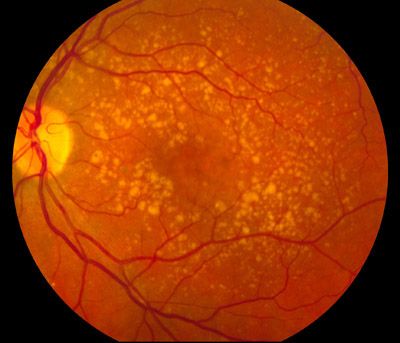Article
Two-Year Data Reinforces Improved Vision Outcomes with Faricimab in Wet AMD
Author(s):
More than 60% of faricimab patients could be treated every 4 months at 2-year mark of TENAYA and LUCERNE studies.

New two-year findings from the TENAYA and LUCERNE studies suggest more than 60% of patients with wet age-related macular degeneration (AMD) receiving faricimab (Vabysmo) could be treated every 4 months while achieving comparable vision gains compared to every two-month aflibercept treatment.
This is an increase of over 15 percentage points since the one-year primary analysis, according to the investigators, while nearly 80% of those receiving faricimab could be treated every 3 months or longer.
“These longer-term results reinforce confidence in [faricimab] and support its continued use in people with wet AMD,” said Levi Garraway, M.D., Ph.D., chief medical officer and head of Global Product Development of Genentech in an accompanying statement.
The data were presented at the American Society of Retina Specialists 40th Annual Scientific Meeting.
More findings from the analysis suggest patients treated with faricimab received a median number of 10 injections over the 2 study years compared to 15 injections for those treated with aflibercept, with a potential decrease in the number of injections.
There were comparable reductions observed in central subfield thickness (CST) observed with faricimab given at intervals of up to 4 months versus aflibercept given every 2 months. Investigators noted that no new safety signals were identified and the agent continued to be well-tolerated with a favorable benefit-risk profile.
Within the studies, patients with wet AMD were given faricimab at intervals of 2, 3, or 4 months or aflibercept given every two months. In the second year, the dosing schedule for faricimab patients could be adjusted based on their response to treatment, investigators said.
In TENAYA, the average vision gain from baseline at two years were +3.7 eye chart letters in the faricimab arm and +3.3 letters in the aflibercept arm. In LUCERNE, the average vision gain from baseline at 2 years were +5.0 letters in the faricimab arm and +5.2 letters in the aflibercept arm.
The data additionally show 59% (n = 160 of 271) of faricimab patients in TENAYA and 67% (n = 192 of 287) in LUCERNE achieved four-month dosing at 2 years. This was an observed increase over the one-year results, showing that 46% (n = 144 of 315) of faricimab patients in TENAYA and 45% (n = 142 of 316) in LUCERNE achieved four-month dosing.
Moreover, an additional 15% (n = 41 of 271) of faricimab patients in TENAYA and 14% (n = 41 of 287) in LUCERNE achieved three-month dosing at 2 years
Combined, more than 78% of Vabysmo patients were able to go three months or longer between treatments at the end of the second year. Within both studies, there were comparable reductions in central subfield thickness (CST) observed with faricimab given at intervals of up to 4 months versus aflibercept given every 2 months.
Investigators noted the safety results were consistent across study arms. There were no reported cases of retinal vasculitis or intraocular inflammation (IOI) associated with retinal vein or retinal artery occlusion.
The analysis of these two studies at 1 year was the basis of the recent approvals for wet AMD in the United States and abroad. Faricimab is the first bispecific antibody for the eye and is the only injectable eye medicine approved by the US Food and Drug Administration with the option for 1 to 4 months apart in the first year following four initial monthly loading doses, based on patient evaluation.
The agent is designed to block 2 disease pathways linked to a number of vision-threatening retinal conditions by neutralizing angiopoietin-2 (Ang-2) and vascular endothelial growth factor-A (VEGF-A).
The agent will undertake a Phase III clinical development program, including an extension study of TENAYA and LUCERNE called AVONELLE-X. The extension study will evaluate the long-term safety and tolerability of faricimab in wet AMD. Meanwhile, the RHONE-X extension study of YOSEMITE and RHINE will evaluate the long-term safety of tolerability of faricimab in diabetic macular edema (DME).
Additionally, the underway COMINO and BALATON trials will evaluate the efficacy and safety of faricimab in patients with macular edema following retinal vein occlusion (RVO). The company has further Initiated the Phase IV Elevatum study of faricimab in underrepresented patient populations with DME.
“With the potential to require fewer injections over time, Vabysmo continues to represent an important step forward for people with vision-threatening retinal conditions, and these data exemplify our commitment to redefining standards of care and reducing treatment burden,” Garraway added.
"Faricimab in Neovascular Age-Related Macular Degeneration: Year 2 Efficacy, Safety, and Durability Results From the Phase 3 TENAYA and LUCERNE Trials," was presented at ASRS 2022.





